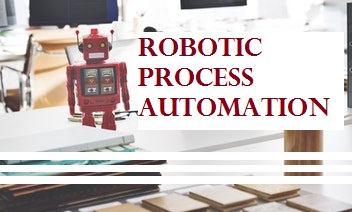Welcome to the world of Robotic Process Automation!
Called RPA in short, this high-tech way helps handle a process, intelligently. It is not about deploying robots but automating a series of instructions based on specific algorithms. The said algorithms rely only on data and defined rules to take decisions swiftly on very complex issues – kind of decisions that human brain could take much longer to reach.
The RPA algorithms are not as as complex as that of AI applications. And that works to their favour since they can find application in a much wider areas/industries.
Ofcourse, RPA is showing its usefulness in financial sector. Companies are using RPA to handle insurance claims, analyse financial statements and determine credit profile, assess balance sheet, and lot more.
As per estimates by PwC 45% of “all work activities eventually might be automated this way”. As per their estimate, this would lead to a USD 2 Tr reduction in employee costs globally.
RPA is easy to deploy. It does not require any complex technology integration. In fact, it is so simple to install that it can be installed one at a time. People with some technology background would install the software without any IT experts help within a matter of few days. This means RPA can come in handy for several individual user and is not necessarily a business applications.
Having said that, this technology is being looked at as a solution for businesses that make process automation central to their operations. As businesses implement RPA, they will see the results in the form of high ROIs.
Difference between RPAs and AIs
Now, we are entering a territory that has been confused by many. The two terms – RPA & AI – are being used interchangeably wrongly.
IEEE Standards Association defines RPA as follows:
Use of a ‘pre-configured’ software instance that uses business rules and pre-defined activity choreography to complete the autonomous execution of a combination of processes, activities, transactions, and tasks in one or more unrelated software systems to deliver a result or service with human exception management.
And Artificial Intelligence as follows:
the combination of cognitive automation, machine learning (ML), reasoning, hypothesis generation and analysis, natural language processing and intentional algorithm mutation producing insights and analytics at or above human capability.
In simple terms, RPA is a software that, with defined rules, decides like humans whereas Artificial Intelligence (AI) is simulating human intelligence by machines. As per some experts, RPA is about ‘DOING’ and AI is about ‘THINKING’.












